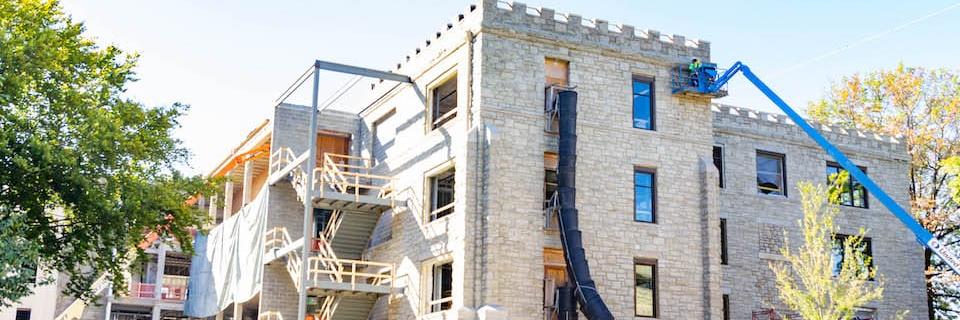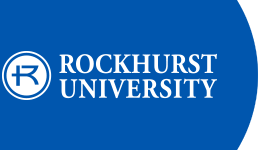Sustainability an Integral Part of Sedgwick Project

Oct. 27 is Sustainability Day, a recognition of efforts being made worldwide to combat the advance and effects of climate change.
On the Rockhurst University campus, green- and sustainability-focused policies can be seen at work in the Sedgwick Hall and other construction projects, from resources, being repurposed to practices and materials used.
In the Sedgwick Hall project, efforts toward being sustainable began with the building itself. Renovating an existing building instead of building something new results in a significantly lower carbon footprint for the building, saving approximately 3 million pounds of carbon dioxide. And crews preserved old-growth trees in the building's footprint by building an irrigation system to provide them water, a measure that also prevents damage to the building's foundation.
Sustainability for business extends to the new stuff going in, too. The new windows are made of insulated glass that reduces solar heat in the summer and heat loss in the winter. The building’s heating and air conditioning system will now be much more efficient, using a variable refrigerant flow (VRF). The entirety of the envelope will have new, continuous insulation, including the roof. Supplies used in the construction are made of recycled material where possible, such as acoustic fins made from recycled plastic water bottles. Future plans include using the roof for solar energy, all with the hopes of continuing to combat the effects of climate change.
Being good stewards of the Earth is about more than earning recognition for sustainability. In August, as students, faculty, staff and others signed the final structural beam needed for the building, University President the Rev. Thomas B. Curran, S.J., said taking a moment to reflect on the natural resources expended for such a project, he said, echoes the Jesuit call to care for our common home.
“Another way of expressing right relationship with nature is a commitment to sustainability,” Fr. Curran said. “Living in harmony with the Creator, with one another and with the created goods of the Earth.”
In addition to the things going into Sedgwick, there has also been creative reuse for things coming out of it. Lighting fixtures and marble from before the renovation started will be reused. Some of the original limestone removed as part of renovations is being used in the construction of a new grotto for the campus’s Mary statue. And throughout campus, items can be found made partially from wood saved from a pin oak tree that was removed due to the Sedgwick work.
With the help of the University’s sustainability committee, Matt Young, grounds foreman, said he and his staff worked with three local companies — Urban Tree Specialists, Main Street Tree Care, and Chainsaw Folk Art — to mill, haul and store the wood and to create unique pieces. They include a number of engraved benches, a conference table with the University’s circle-R logo, and a lifesize statue of Rock E. Hawk carved from a single piece of pin oak via chainsaw now located in the Jim and Ellen Glynn Alumni Commons of the MAC.
“We wanted to reclaim that wood for purposeful stuff as much as we could,” he said.
All the small and large gestures add up — according to information from Jason Riordan, associate vice president for facilities operations, the Sedgwick project is forecast to exceed current energy code standards by an amount equivalent to 108 metric tons of carbon dioxide per year, roughly the same amount of carbon sequestered by 41 acres of U.S. forests in one year. It will also exceed the ambitious energy use intensity targets set out in the American Institute of Architects 2030 Challenge.
"With Sedgwick being a vital part of our past, present and now future, we wanted to make sure our core values were deeply infused to the renovated building," Riordan said. "Being able to reuse the existing historical building and fusing it with current-day technology allows it to be one of the most sustainable buildings in the Midwest region and is a great expression of our commitment to sustainability and our care for our common home."







